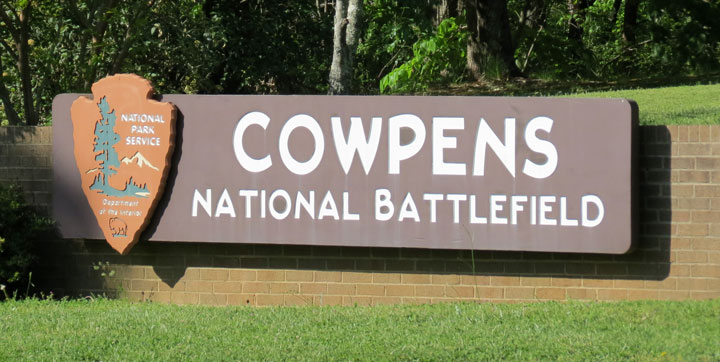
Clinton Clemson Columbia Covered Bridges Cowpens Gaffney Greenville Greer Strom Thurmond Walhalla
Battle of Cowpens

The Battle of Cowpens (January 17, 1781) was a decisive victory
by Continental army forces under Brigadier General Daniel Morgan, in the
Southern campaign of the American Revolutionary War. It was a turning point in
the reconquest of South Carolina from the British.

On October 14, 1780, George Washington chose Nathanael Greene to
be commander of the Southern Department of the Continental forces. Greene's
task was not an easy one. The Carolinas had seen a long string of disasters in
1780, the worst being the capture of one American army at the Siege of
Charleston and the destruction of another at the Battle of Camden. A victory of
Patriot militia over their Loyalist counterparts at the Battle of Kings Mountain
in October had bought time, but most of South Carolina was still under British
occupation. When Greene took command the southern army numbered only 2307 men
(on paper, 1482 present), of whom just 949 were Continental regulars.
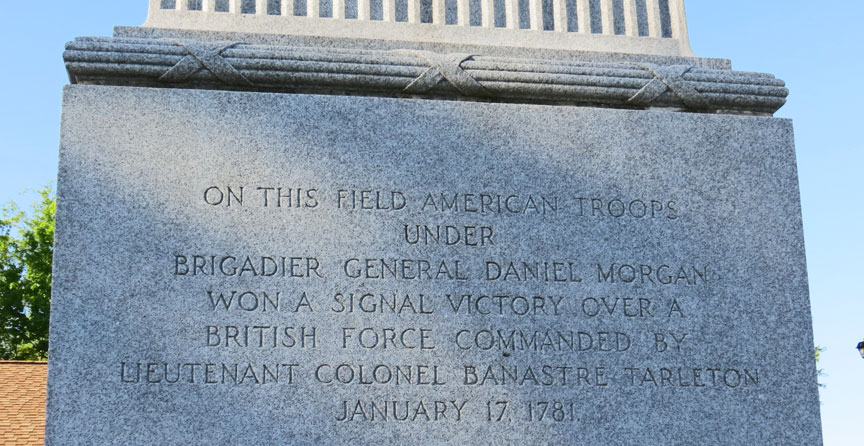
On December 3, Daniel Morgan reported for duty to Greene's headquarters at
Charlotte, North Carolina. At the start of the Revolution, Morgan, whose
military experience dated back to the French and Indian War, had served at the
Siege of Boston. Later he participated in the 1775 invasion of Canada and its
climactic battle, the Battle of Quebec. That battle, on December 31, 1775, ended
in defeat and Morgan's capture by the British. Morgan was exchanged in January
1777 and placed by George Washington in command of a picked force of 500 trained
riflemen. Morgan and his men played a key role in the victory at Saratoga that
proved to be a turning point of the entire war. Bitter after being passed over
for promotion and plagued by severe attacks of sciatica, Morgan left the army in
1779, but a year later he was promoted to Brigadier General and returned to
service in the Southern Department.
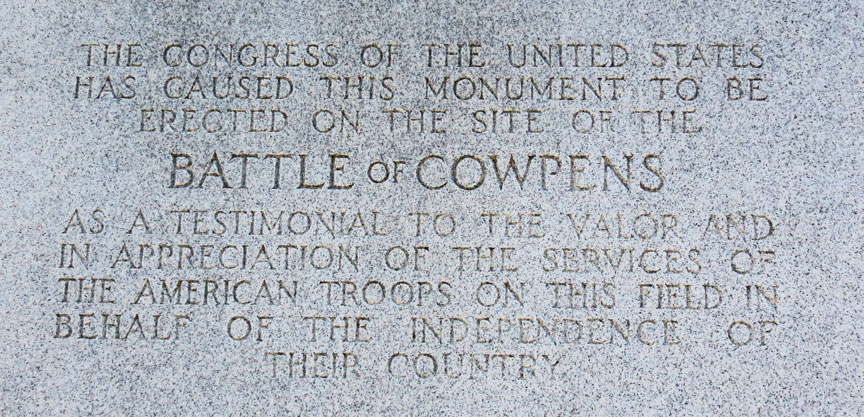
Greene decided that his weak army was unable to meet the British in a standup
fight. He then made the unconventional decision to divide his army, sending a
detachment west of the Catawba River to raise the morale of the locals and find
supplies beyond the limited amounts available around Charlotte. Greene gave
Morgan command of this wing and instructed him to join with the militia west of
the big Catawba and take command of them. Morgan headed west on December 21,
charged with taking position between the Broad River and Pacolet River and
protecting the civilians in that area. He had 600 men, some 400 of which were
Continentals, the rest being Virginia militia with experience as
Continentals. By Christmas Day Morgan had reached the Pacolet River. There
he was joined by 60 South Carolina militia led by the experienced partisan
Andrew Pickens. Other militia from Georgia and the Carolinas joined Morgan's
camp.
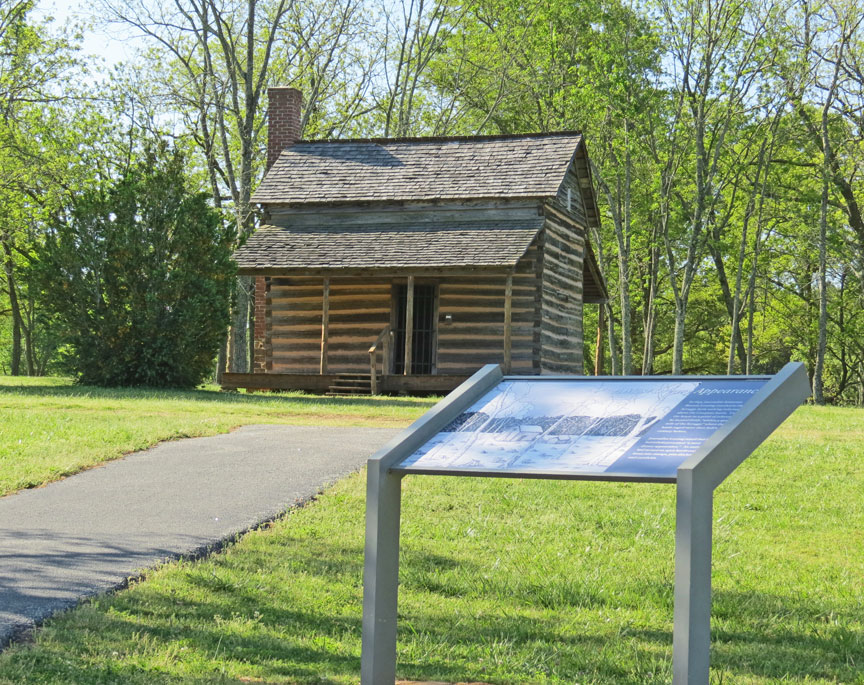
Meanwhile, Lord Cornwallis was planning to return to North Carolina and conduct
the invasion that he had postponed after the defeat at Kings Mountain.
Morgan's force represented a threat to his left. Additionally, Cornwallis
received incorrect intelligence claiming that Morgan was going to attack the
important British fort at Ninety Six, South Carolina. Seeking to save the fort
and defeat Morgan's command, Cornwallis on January 2 ordered Lt. Col. Banastre
Tarleton west.
Tarleton was only 26 years old but had enjoyed a spectacular career that began
when he and a small party surprised and captured Patriot Gen. Charles Lee in New
Jersey in December 1776. He served with distinction at the Siege of Charleston
and the Battle of Camden. Commanding the British Legion, a mixed
infantry/cavalry force that constituted some of the best British troops in the
Carolinas, Tarleton won decisive victories at Monck's Corner and Fishing Creek.
He became infamous amongst Patriots after his victory at the Battle of Waxhaws,
when his men killed American soldiers after they had surrendered.
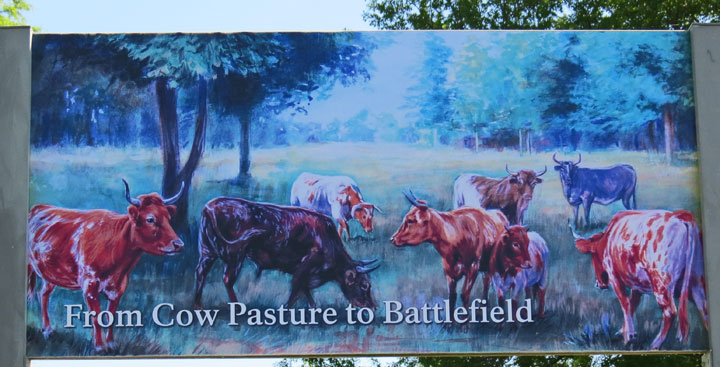
Tarleton and the Legion marched to Ninety Six and found that Morgan was not
there, but Tarleton decided to pursue Morgan anyway. Tarleton asked for
reinforcements of British regulars, which Cornwallis sent. Tarleton then set out
with his enlarged command to drive Morgan across the Broad River. On January
12 he received accurate news of Morgan's location and continued with hard
marching, building boats to cross rivers that were flooding with winter
rains. Morgan, receiving word that Tarleton was in hot pursuit, retreated
north, attempting to avoid being trapped between Tarleton and Cornwallis. By
the afternoon of the 16th Morgan was approaching the Broad River, which was high
with flood waters and reported difficult to cross. He knew Tarleton was close
behind. By nightfall he had reached a place called the Cowpens, a well-known
grazing area for local cattle. Pickens, who had been patrolling, arrived that
night with a large body of militia. Morgan then decided to stand and fight
rather than continue to retreat and risk being caught by Tarleton while fording
the Broad River. Tarleton, for his part, received word of Morgan's location and
made haste, marching at 3 a.m. instead of camping for the night.
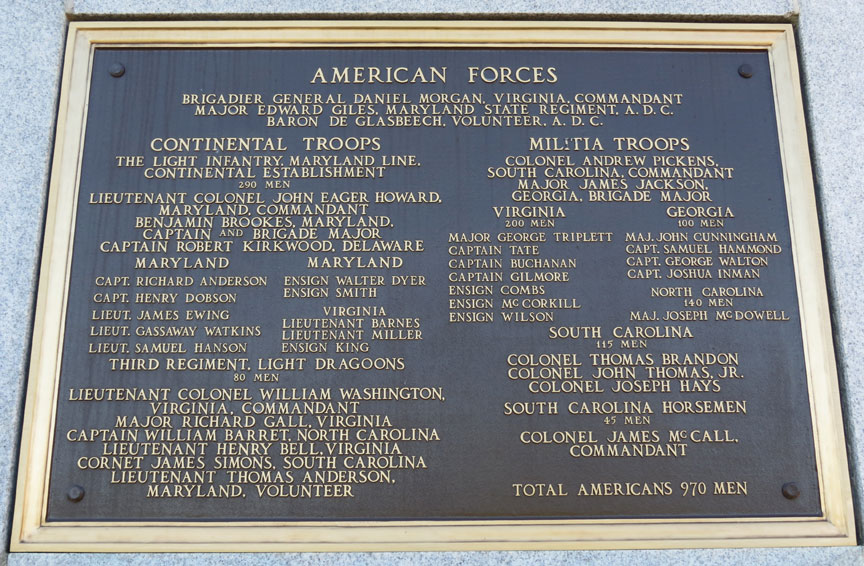
Brig. Gen. Daniel Morgan
The size of the American force at Cowpens remains in dispute. Although Morgan
claimed in his official report to have had only a few over 800 men at Cowpens,
historian Lawrence Babits, in his detailed study of the battle, estimates the
real numbers as:
A battalion of Continental infantry under Lt-Col John Eager Howard, with one
company from Delaware, one from Virginia and three from Maryland; each with a
strength of sixty men (300)
A company of Virginia State troops under Captain John Lawson (75)
A company of South Carolina State troops under Captain Joseph Pickens(60)
A small company of North Carolina State troops under Captain Henry Connelly
(number not given)
A Virginia Militia battalion under Frank Triplett (160)
Three companies of Virginia Militia under Major David Campbell (50)
A battalion of North Carolina Militia under Colonel Joseph McDowell
(260–285)
A brigade of four battalions of South Carolina Militia under Colonel Andrew
Pickens, comprising a three-company battalion of the Spartan Regiment under
Lt-Col Benjamin Roebuck; a four-company battalion of the Spartan Regiment under
Col John Thomas; five companies of the Little River Regiment under Lt-Col Joseph
Hayes and seven companies of the Fair Forest Regiment under Col Thomas Brandon.
Babits states that this battalion “ranged in size from 120 to more than 250
men”. If Roebuck’s three companies numbered 120 and Brandon’s seven companies
numbered 250, then Thomas’s four companies probably numbered about 160 and
Hayes’s five companies about 200, for a total of (730)
Three small companies of Georgia Militia commanded by Major Cunningham who
numbered
A detachment of the 1st and 3rd Continental Light Dragoons under Lt-Col William
Washington . Washington was second cousin to Gen. George Washington.
The figures given by Laurence E. Babits total 82 Continental light dragoons; 55
state dragoons; 45 militia dragoons; 300 Continental infantry; about 150 state
infantry and 1,255-1,280 militia infantry, for a total of 1,887–1,912 officers
and men. Broken down by state, there were about 855 South Carolinians; 442
Virginians; 290–315 North Carolinians; 180 Marylanders; 60 Georgians and 60
Delawareans. Historian John Buchanan disagrees, stating that the total was
closer to Morgan's estimate, somewhere between 800 and 1000 men. Whatever
their total size, Morgan's Continentals were veterans, and many of his militia,
which included some Overmountain Men, had seen service at the Battle of Musgrove
Mill and the Battle of Kings Mountain."Lieutenant-Colonel Banastre Tarleton" by
Sir Joshua Reynolds.
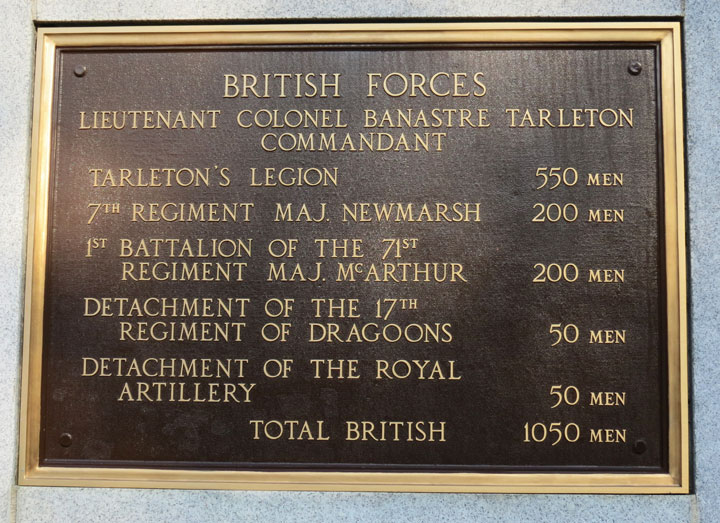
Tarleton's force included:
The British Legion: 250 cavalry and 200 infantry,
A troop of the 17th Light Dragoons (50),
A battery of the Royal Artillery (24) with two 3-pounder cannons
The 7th Royal Fusiliers Regiment (177)
The light infantry company of the 16th Regiment (42)
The 71st (Fraser's Highlanders) Regiment under Major Arthur MacArthur (334)
The light company of the Loyalist Prince of Wales' American Regiment (31)
A company of Loyalist guides (50)
Broken down by troop classification, there were 300 cavalry, 553 regulars, 24
artillerymen and 281 militia. Tarleton’s men from the Royal Artillery, 17th
Light Dragoons, 16th Regiment and 71st Regiment were reliable and good soldiers:
but the detachment of the 7th Regiment were raw recruits who had been intended
to reinforce the garrison of Fort Ninety-Six where they could receive further
training rather than go straight into action. Tarleton's own unit, the British
Legion were formidable "in a pursuit situation" but had an uncertain reputation
"when faced with determined opposition".
Daniel Morgan knew that he should use the unique landscape of Cowpens and the
time available before Tarleton's arrival to his advantage. Furthermore, he knew
his men and his opponent, knew how they would react in certain situations, and
used this knowledge to his advantage. He defied convention by placing his army
between the Broad and Pacolet River, thus making escape impossible if the army
was routed. His reason for doing so was to ensure that the untrained militiamen
would not, as they had been accustomed to do, turn in flight at the first hint
of battle and abandon the regulars. (The Battle of Camden had ended in disaster
when the militia, which was half of the American force, broke and ran as soon as
the shooting started.) Selecting a low hill as the center of his position, he
placed his Continental infantry on it, deliberately leaving his flanks exposed
to his opponent. Morgan reasoned that Tarleton would attack him head on, and he
made his tactical preparations accordingly. He set up three lines of soldiers:
one of skirmishers (sharpshooters); one of militia; and a main one. The 150
select skirmishers were from North Carolina (Major McDowell) and Georgia (Major
Cunningham). The second line, behind the skirmishers but in front of the third
line of Continentals, consisted of 300 militiamen under the command of Andrew
Pickens.
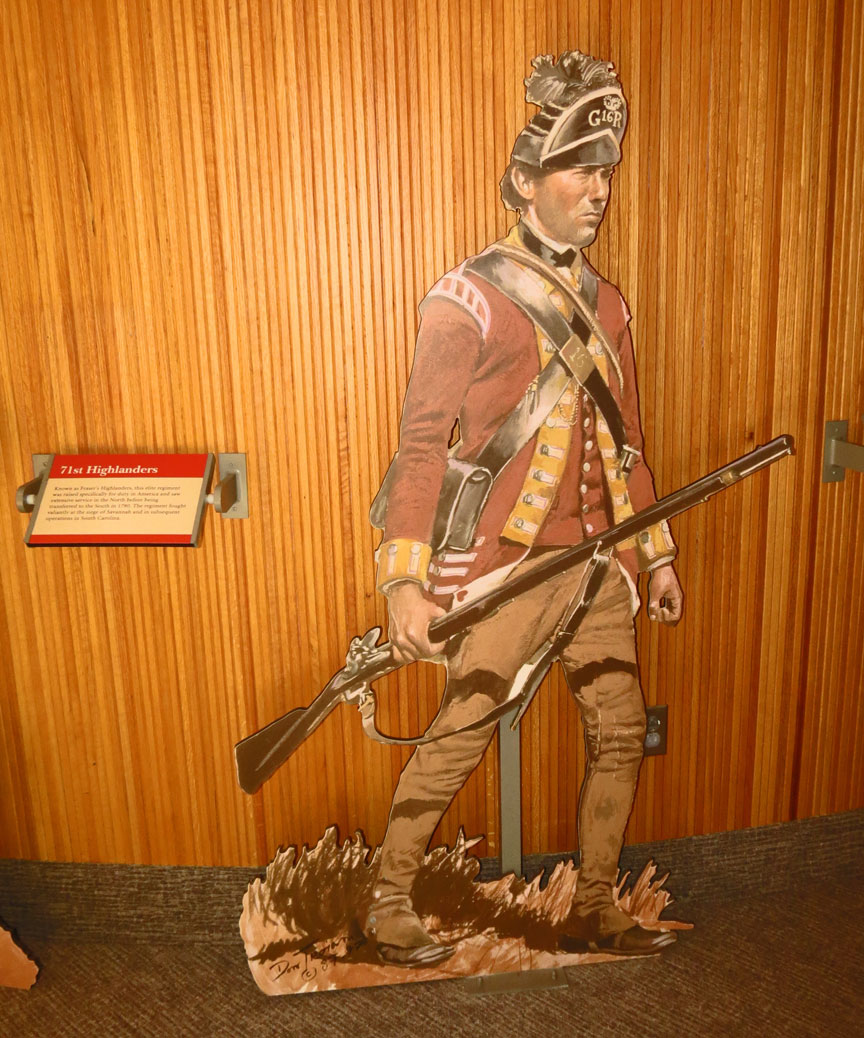
Realizing that poorly trained militia were unreliable in battle, especially when
they were under attack from cavalry, Morgan did not tell them to stand and
fight. Instead, he asked the militia to fire two volleys and then withdraw
around the left, so he could have them re-form in the rear, behind the third
line, under cover of the reserve (light dragoons commanded by William Washington
and James McCall). The movement of the militia in the second line would mask the
third line to the British. The third line, on the hill, was manned by his best
troops: about 550 men consisting of Continentals from Delaware and Maryland, and
experienced militiamen from Georgia and Virginia. Colonel John Eager Howard
commanded the Continentals and Colonels Tate and Triplett the militia. The goal
of this tactic was to weaken and disorganize Tarleton's forces (which would be
attacking the third line uphill) before attacking and defeating them. Howard’s
men would not be unnerved by the militia’s expected move, and unlike the militia
they would be able to stand and hold, especially since the first and second
lines, Morgan felt, would have inflicted both physical and psychological damage
on the advancing British before the third line came into action.
With a ravine on their right flank and a creek on their left flank, Morgan's
forces were protected against British flanking maneuvers at the beginning of the
battle. Morgan insisted,
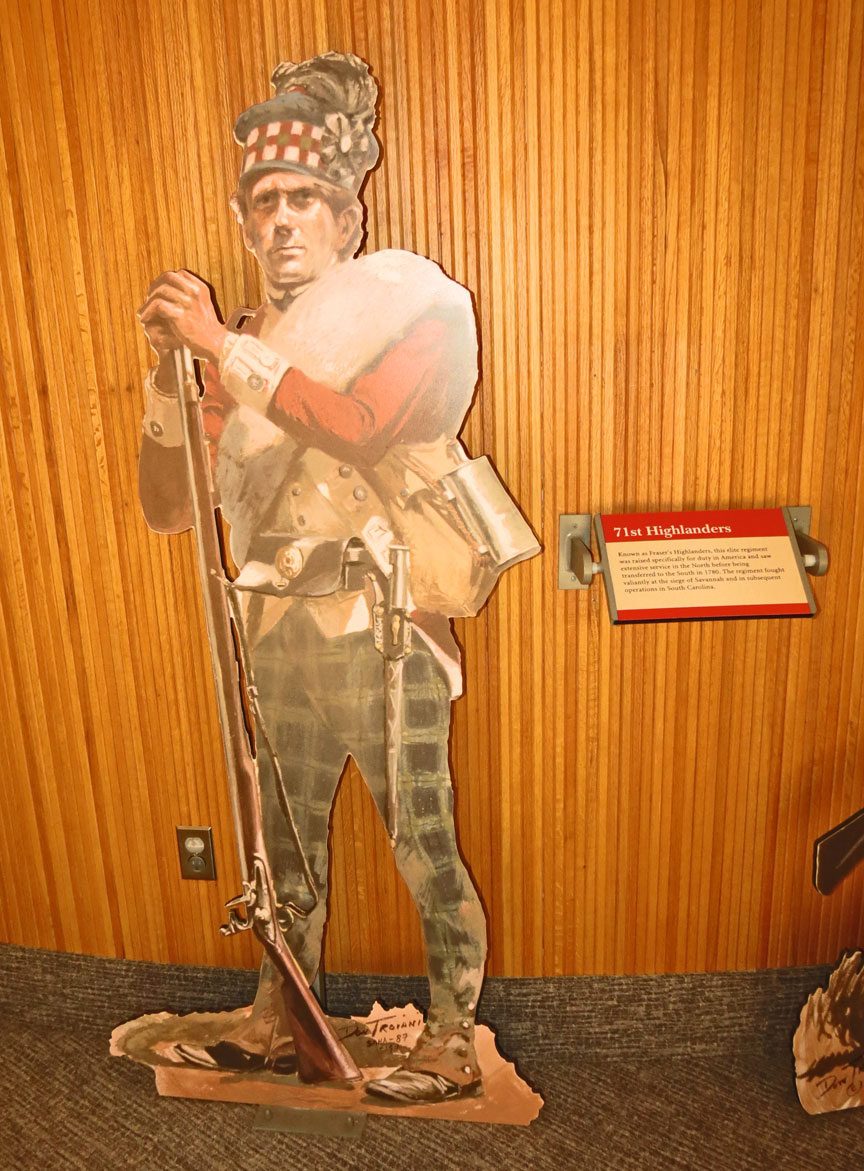
71th Highlanders
"the whole idea is to lead Benny [Tarleton] into a trap so we can beat his
cavalry and infantry as they come up those slopes. When they've been cut down to
size by our fire, we'll attack them."
In developing his tactics at Cowpens, as historian John Buchanan wrote, Morgan
may have been "the only general in the American Revolution, on either side, to
produce a significant original tactical thought.”
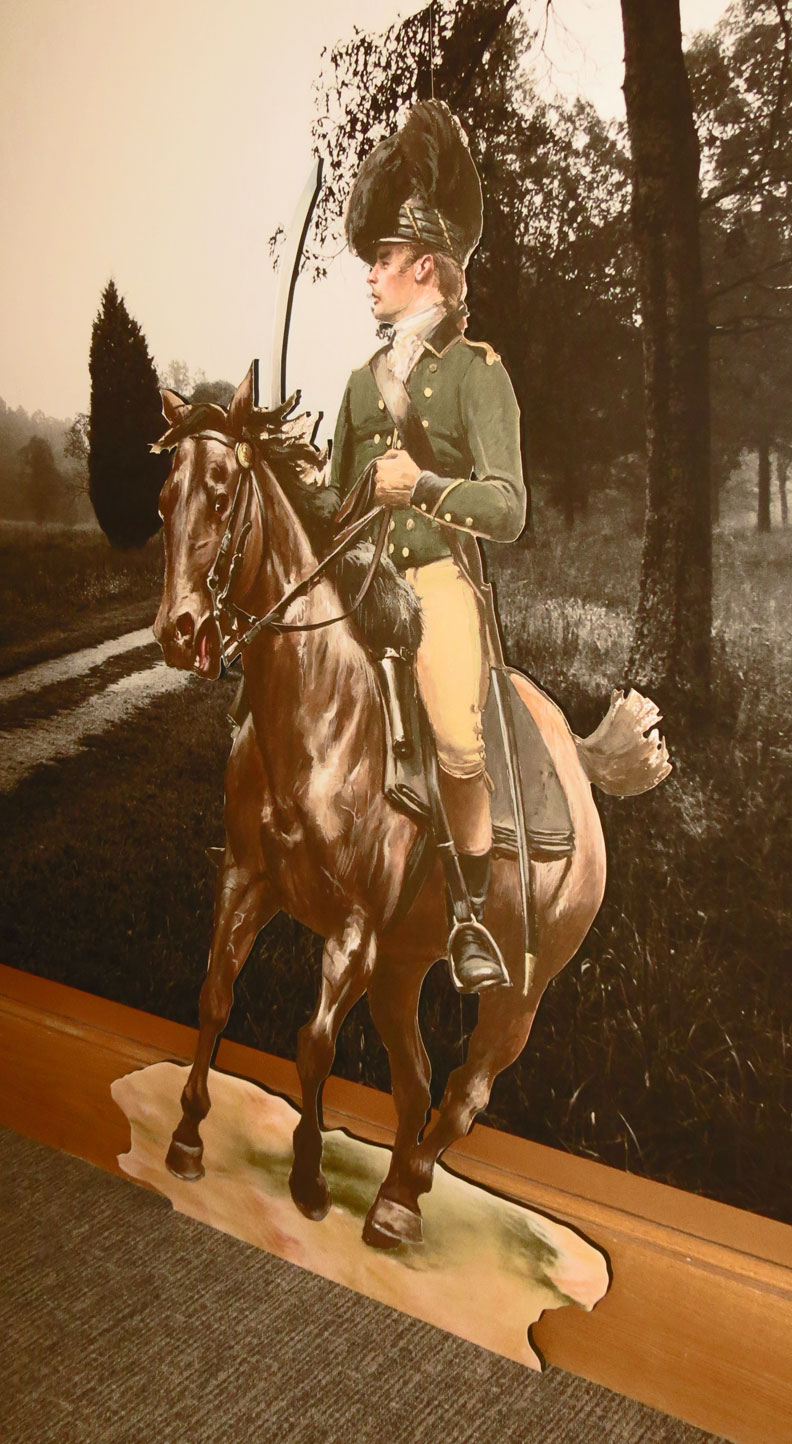
Tarleton
At 2:00 a.m. on January 17, 1781, Tarleton roused his troops and continued his
march to Cowpens. Lawrence Babits states that, "in the five days before Cowpens,
the British were subjected to stress that could only be alleviated by rest and
proper diet". He points out that “in the forty-eight hours before the battle,
the British ran out of food and had less than four hours’ sleep”. Over the
whole period, Tarleton’s brigade did a great deal of rapid marching across
difficult terrain. Babits concludes that they reached the battlefield exhausted
and malnourished. Tarleton sensed victory and nothing would persuade him to
delay. His Tory scouts had told him of the countryside Morgan was fighting on,
and he was certain of success because Morgan's soldiers, mostly militiamen,
seemed to be caught between mostly experienced British troops and a flooding
river. As soon as he reached the spot, he formed a battle line, which
consisted of dragoons on his flanks, with his two grasshopper cannon in between
the British Regulars and American Loyalists.
Tarleton’s plan was simple and direct. Most of his infantry (including that of
the Legion) would be assembled in linear formation and move directly upon
Morgan. The right and left flanks of this line would be protected by dragoon
units. In reserve were the 250-man battalion of Scottish Highlanders (71st
Regiment of Foot), commanded by Major Arthur MacArthur, a professional soldier
of long experience who had served in the Dutch Scotch Brigade. Finally, Tarleton
kept the 200-man cavalry contingent of his Legion ready to be unleashed when the
Americans broke and ran.
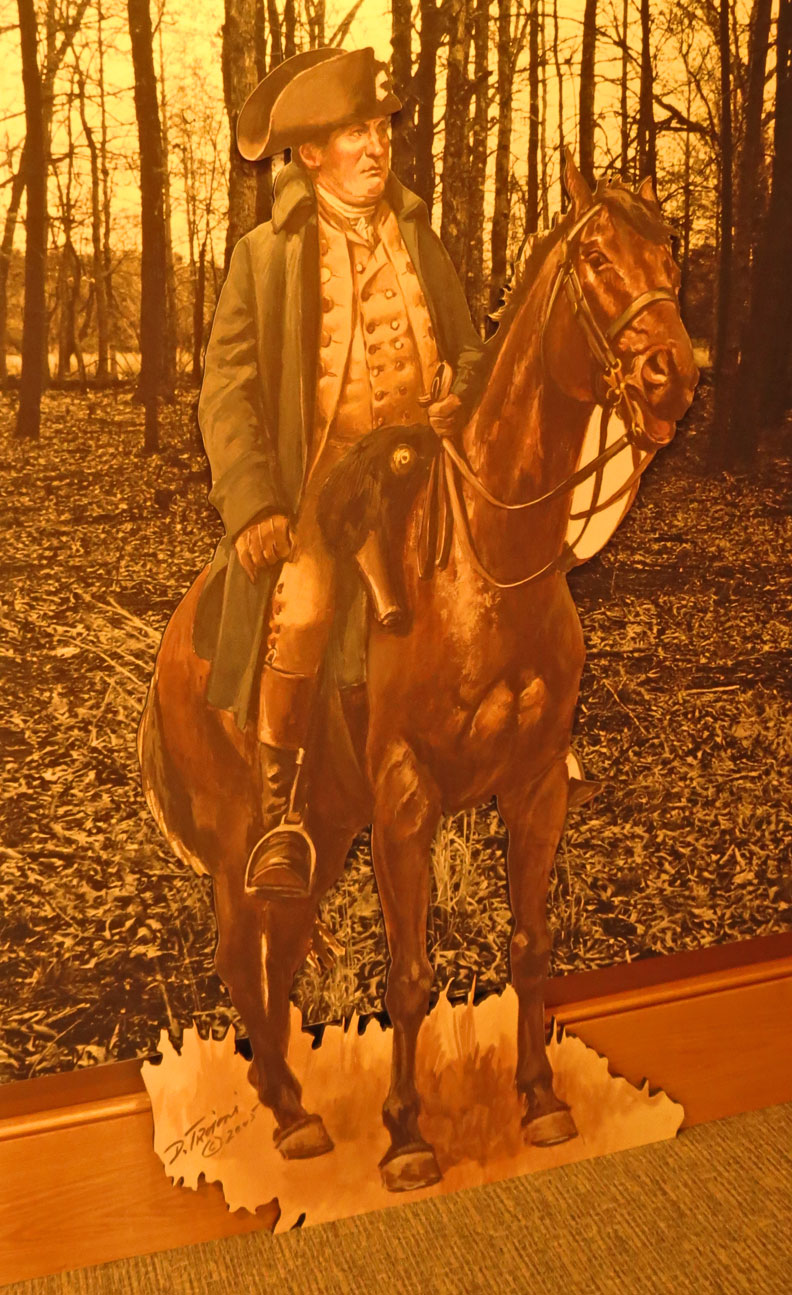
Brig. Gen. Daniel Morgan
Battle of Cowpens 17 January 1781. Right flank(cavalry) of Lt. Col.William
Washington and (left flank) the militia returned to enfilade
Morgan's stratagem worked perfectly. The British drove in successive lines,
anticipating victory only to encounter another, stronger line after exerting
themselves and suffering casualties. The depth of the American lines gradually
soaked up the shock of the British advance.
At approximately 6:45 a.m., which was a few minutes before sunrise, Tarleton's
van emerged from the woods in front of the American position. Tarleton ordered
his dragoons to attack the first line of skirmishers, who opened fire and
dropped fifteen dragoons. The dragoons promptly retreated, whereupon Tarleton
immediately ordered an infantry charge, without pausing to study the American
deployment or to allow the rest of his infantry and his cavalry reserve to make
it out of the woods. Tarleton attacked the skirmish line without pausing,
deploying his main body and his two grasshopper cannon. The American skirmishers
kept firing as they withdrew to join the second line manned by Pickens' militia.
The British attacked again, this time reaching the militiamen, who (as ordered)
poured two volleys into the enemy. The British—with 40% of their casualties
being officers—were astonished and confused. They reformed and continued to
advance. Tarleton ordered one of his officers, Ogilvie, to charge with some
dragoons into the "defeated" Americans. His men moved forward in regular
formation and were momentarily checked by the militia musket fire but continued
to advance. Pickens' militia filed around the American left to the rear as
planned after getting off their second volley.
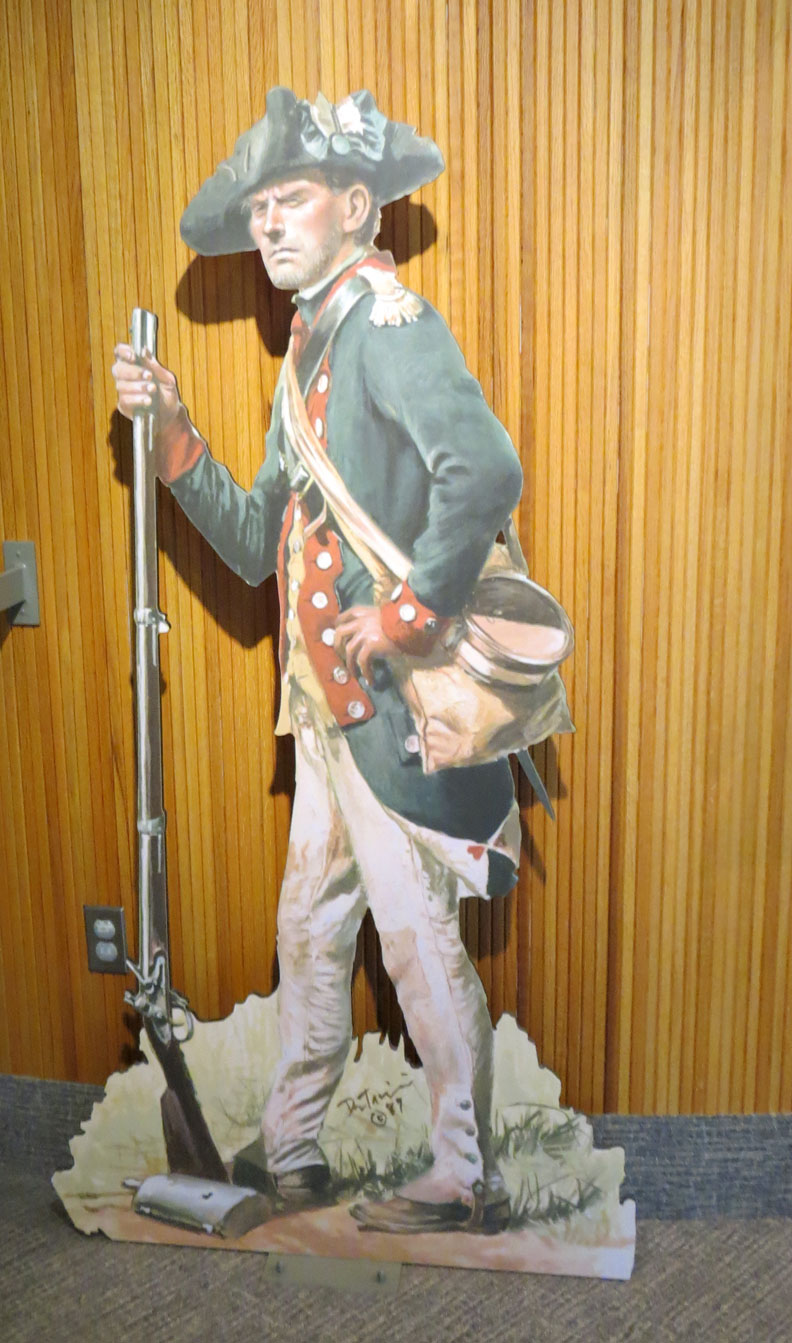
Taking the withdrawal of the first two lines as a full blown retreat, the
British advanced headlong into the third and final line of disciplined regulars
which awaited them on the hill. The 71st Highlanders were ordered to flank the
American right. John Eager Howard spotted the flanking movement and ordered the
Virginia militiamen manning the American right to turn and face the Scots.
However, in the noise of battle Howard's order was misunderstood and the
militiamen began to withdraw. It was now 7:45 am and the British had been
fighting for nearly an hour. They were tired and disorganized, but they saw the
militia withdrawing and believed the Americans were on the run. They charged,
breaking formation and advancing in a chaotic mass. Morgan ordered a volley.
Howard's militia stopped their withdrawal and made an about-face. The Virginians
fired into the British at a range of no more than thirty yards, with deadly
effect, causing the confused British to lurch to a halt. John Eager Howard then
shouted "Charge bayonets!"
The Continentals, as ordered, then mounted a bayonet charge. Tarleton's force,
faced with a terrible surprise, began to collapse; some surrendering on the
spot, while others turned and ran. Howard's men charged forward and seized the
British cannons. Washington's cavalry came around from behind the American left
to hit the British on their right flank and rear. Pickens' militia, having
re-formed, charged out from behind the hill—completing a 360-degree circle
around the American position—to hit the 71st Highlander Scots on the British
left flank and rear. Howard ordered the Virginia militia, whose withdrawal had
brought on the British charge, to turn about and attack the Scots from the other
direction.
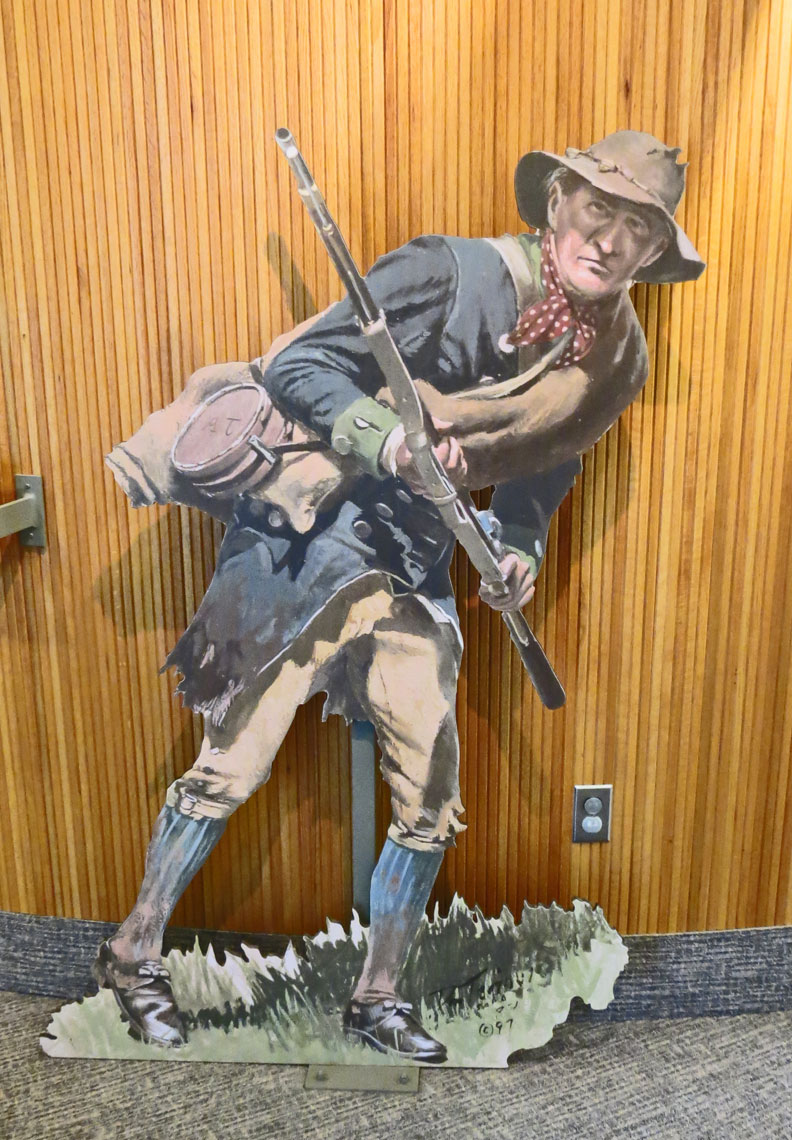
The shock of the sudden charge, coupled with the reappearance of the American
militiamen on the left flank where Tarleton's exhausted men expected to see
their own cavalry, proved too much for the British. Nearly half of the British
and Loyalist infantrymen fell to the ground whether they were wounded or not.
Their ability to fight had gone. Historian Lawrence Babits diagnoses "combat
shock" as the cause for this abrupt British collapse—the effects of exhaustion,
hunger and demoralization suddenly catching up with them. Caught in a clever
double envelopment that has been compared with the Battle of Cannae, many of the
British surrendered. With Tarleton's right flank and center line collapsed,
there remained only a minority of the 71st Highlanders who were still putting up
a fight against part of Howard's line. Tarleton, realizing the desperate
seriousness of what was occurring, rode back to his one remaining unit that was
in one piece, the Legion Cavalry. He ordered them to charge, but they refused
and fled the field. The Highlanders, surrounded by militia and Continentals,
surrendered. Desperate to save something, Tarleton managed to find about forty
cavalrymen and with them tried to save the two cannons he had brought with him,
but they had been taken. Tarleton with a few remaining horsemen rode back into
the fight, but after clashing with Washington’s men, he too retreated from the
field. He was stopped by Colonel Washington, who attacked him with his saber,
calling out, "Where is now the boasting Tarleton?". A Cornet of the 17th, Thomas
Patterson, rode up to strike Washington but was shot by Washington's orderly
trumpeter. Tarleton then shot Washington's horse from under him and fled, ending
the battle. It was 8 a.m. and the Battle of Cowpens had lasted approximately one
hour.
Morgan's army took 712 prisoners, which included 200 wounded. Even worse for the
British, the forces lost (especially the British Legion and the dragoons)
constituted the cream of Cornwallis' army. Additionally, 110 British soldiers
were killed in action. Tarleton suffered an 86 percent casualty rate, and his
brigade had been all but wiped out as a fighting force. John Eager Howard quoted
Maj. McArthur of the 71st Highlanders, now a prisoner of the Americans, as
saying that "he was an officer before Tarleton was born; that the best troops in
the service were put under 'that boy' to be sacrificed." An American prisoner
later told that when Tarleton reached Cornwallis and reported the disaster,
Cornwallis placed his sword tip on the ground and leaned on it until the blade
snapped.
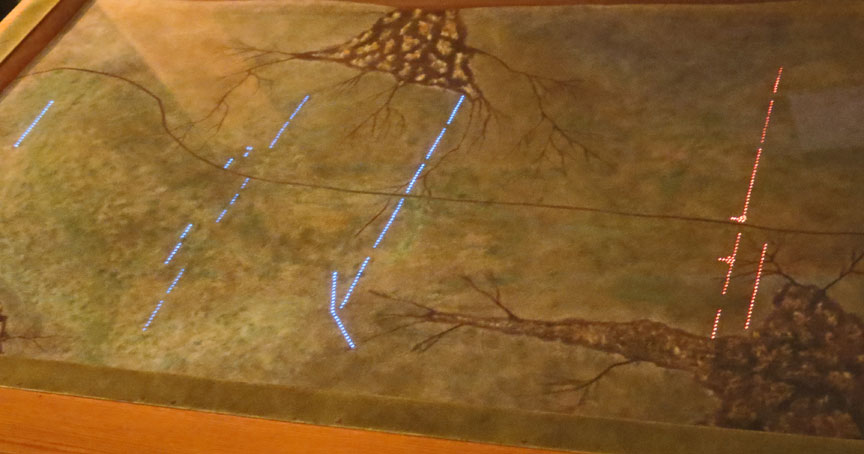
battle lines
Historian Lawrence Babits has demonstrated that Morgan's official report of 73
casualties appears to have only included his Continental troops. From surviving
records, he has been able to identify by name 128 Patriot soldiers who were
either killed or wounded at Cowpens. He also presents an entry in the North
Carolina State Records that shows 68 Continental and 80 Militia casualties. It
would appear that both the number of Morgan's casualties and the total strength
of his force were about double what he officially reported.
Tarleton's apparent recklessness in pushing his command so hard in pursuit of
Morgan that they reached the battlefield in desperate need of rest and food may
be explained by the fact that, up until Cowpens, every battle that he and his
British Legion had fought in the South had been a relatively easy victory. He
appears to have been so concerned with pursuing Morgan that he quite forgot that
it was necessary for his men to be in a fit condition to fight a battle once
they caught him.
Battlefield monument
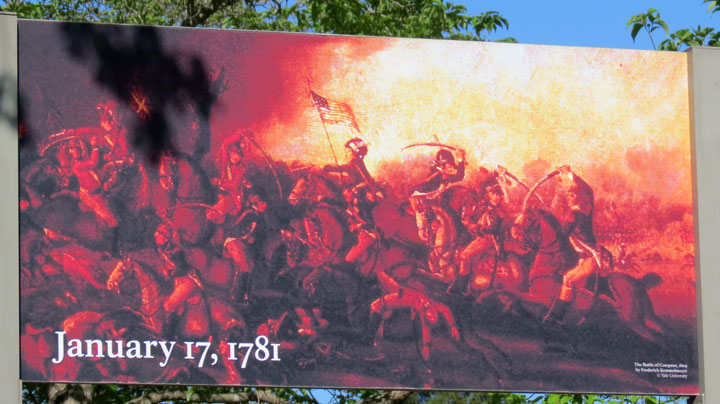
Nevertheless, Daniel Morgan, known affectionately as "The Old Waggoner" to his
men, had fought a masterly battle. His tactical decisions and personal
leadership had allowed a force consisting mainly of militia to fight according
to their strengths to win one of the most complete victories of the war.

Coming in the wake of the American debacle at Camden, Cowpens was a surprising
victory and a turning point that changed the psychology of the entire
war—"spiriting up the people", not only those of the backcountry Carolinas, but
those in all the Southern states. As it was, the Americans were encouraged to
fight further, and the Loyalists and British were demoralized. Furthermore, its
strategic result—the destruction of an important part of the British army in the
South—was incalculable toward ending the war. Along with the British defeat at
the Battle of Kings Mountain, Cowpens was a decisive blow to Cornwallis, who
might have defeated much of the remaining resistance in South Carolina had
Tarleton won at Cowpens. Instead, the battle set in motion a series of events
leading to the end of the war. Cornwallis abandoned his pacification efforts in
South Carolina, stripped his army of its excess baggage, and pursued Greene's
force into North Carolina. Skirmishes occurred at the Catawba River (February 1,
1781) and other fords. Yet, after a long chase Cornwallis met Greene at Guilford
Court House, winning a pyrrhic victory that so damaged his army that he withdrew
to Yorktown, Virginia, to rest and refit. Washington seized this opportunity to
trap and defeat Cornwallis at the Battle of Yorktown, which caused the British
to give up their efforts to defeat the Americans.
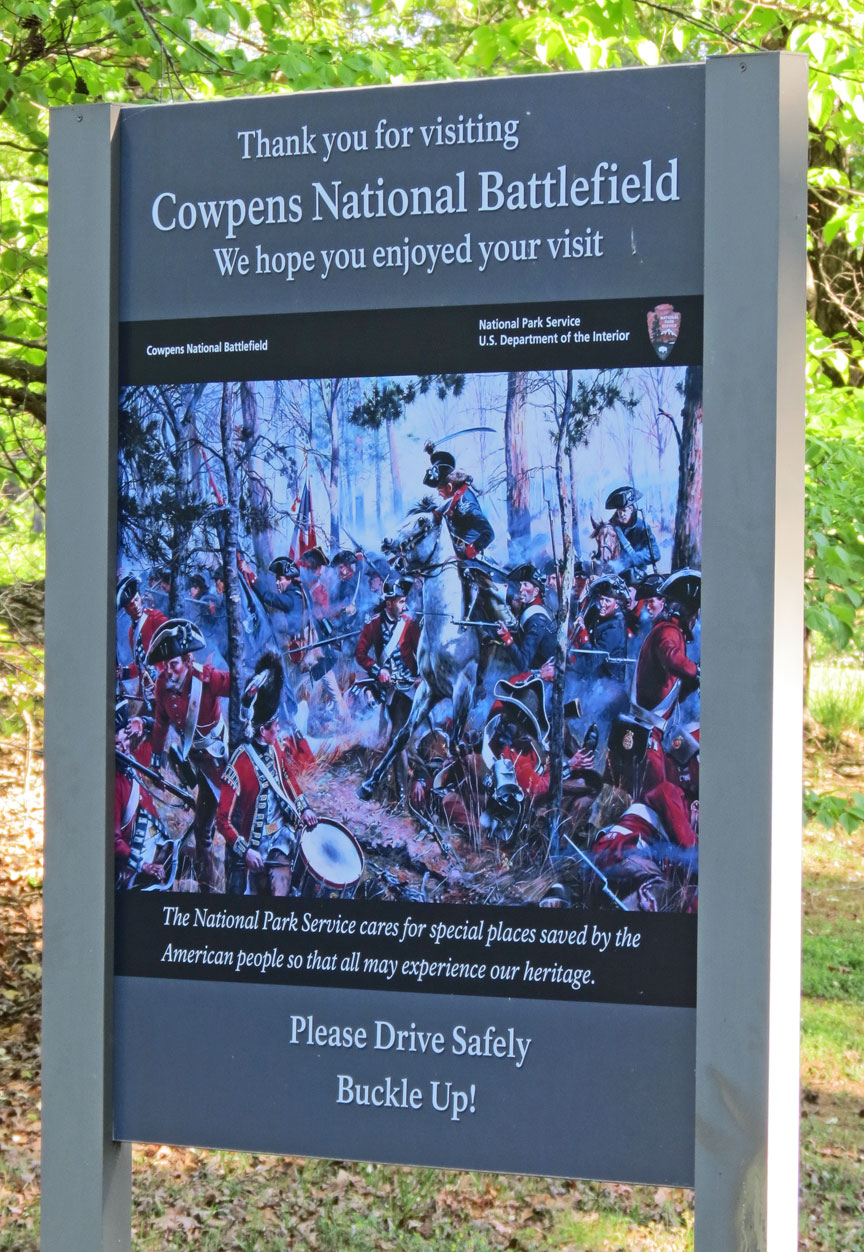
In the opinion of John Marshall, "Seldom has a battle, in which greater numbers
were not engaged, been so important in its consequences as that of Cowpens." It
gave General Nathanael Greene his chance to conduct a campaign of "dazzling
shiftiness" that led Cornwallis by "an unbroken chain of consequences to the
catastrophe at Yorktown which finally separated America from the British crown."
Text from Wikipedia
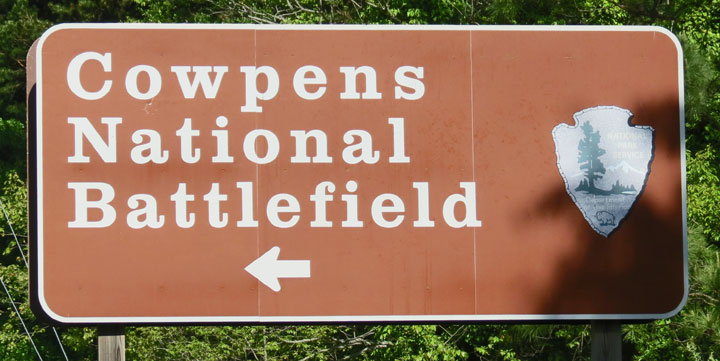
Clinton Clemson Columbia Covered Bridges Cowpens Gaffney Greenville Greer Strom Thurmond Walhalla